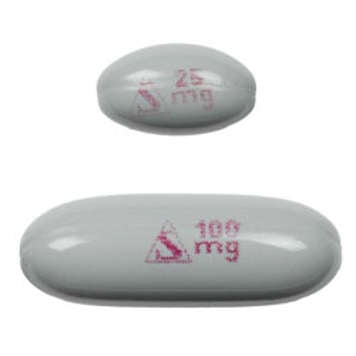Also known as Neoral®, Sandoz cyclosporine®, Apo-cyclosporine®
What is cyclosporine?
Cyclosporine works by preventing your body from rejecting your new organ. It is called an immunosuppressant or an anti-rejection medication.

What cyclosporine looks like
Cyclosporine can come in a capsule or a liquid. Here is a photo of one brand of cyclosporine used after transplant.
Note: This photo is a close-up of the medication; it is not to scale.
How to take cyclosporine
- Always take the same brand of cyclosporine. Call your transplant team if you notice that the capsule or liquid cyclosporine looks different from what you normally take.
- Wash your hands before and after handling cyclosporine.
- Take cyclosporine every 12* hours at the same times every day. *Your transplant team may tell you to take it more often, for example every 8 hours.
- You can take cyclosporine with food or without food, but make sure you take it the same way each time.
- Take cyclosporine with the same type of drink each day, but avoid grapefruit juice, even if it is mixed in with other fruit juices. Grapefruit raises the cyclosporine levels in your blood, which can lead to more side effects. Also, never eat pomelos, tangelos or any other fruit that is a hybrid (mix) of grapefruit and another fruit. Always read food labels carefully to ensure there is no grapefruit in a product.
Taking cyclosporine capsules
- Swallow cyclosporine capsules whole.
Taking cyclosporine microemulsion (liquid)
- Use the special syringe provided with your medication to measure your dose.
- Do not shake the bottle. Wipe the syringe dry after using it.
- Do not rinse the syringe with water.
Possible side effects of cyclosporine
- Upset stomach, vomiting (throwing up)
- Diarrhea (watery stools)
- Lower levels of magnesium in the blood
- Higher levels of potassium in the blood
- High blood pressure
- High blood sugar (some teens develop diabetes)
- Kidney damage
- Shakiness of the hands or feet (tremor)
- Fine body hair growth on the face and body
- Tender or enlarged gums
- Mild headache
- Seizures (if blood levels of cyclosporine are too high)
- Leg cramps
- Higher risk of infection
How to store cyclosporine
- Keep cyclosporine out of reach of any small children.
- Keep it at room temperature.
- Store it in a cool, dry place away from sunlight.
- Never store it in the bathroom or near heat sources in the kitchen.
- Never store it in the refrigerator or freezer.
Cyclosporine capsules
- Keep them in their foil package right up until you are ready to take your dose.
Cyclosporine liquid
- Keep it in its original glass bottle.
Once a container of liquid cyclosporine is opened, use it within two months. Write on the label the date you opened the bottle.






